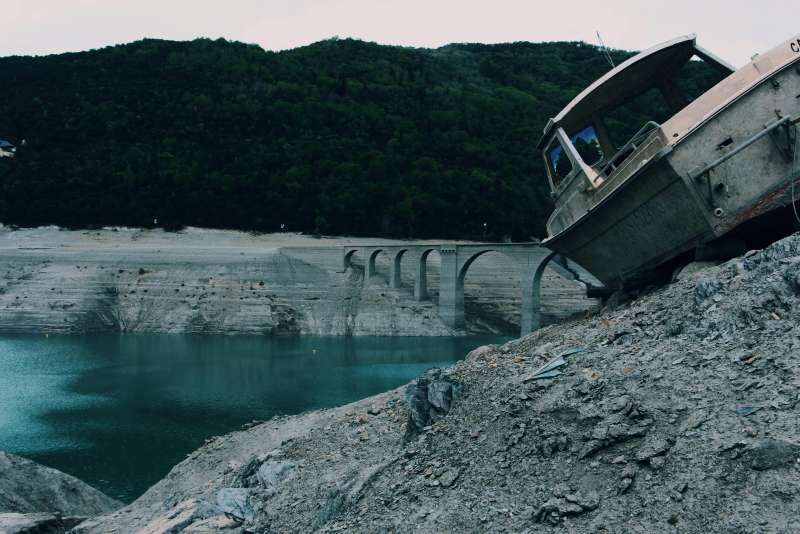Energy Crisis and Environmental Disasters: The Truth Behind the Headlines
Published on: May 3, 2025
Energy Crisis and Environmental Disasters: The Truth Behind the Headlines
The world is in the midst of a profound energy crisis, amplified by a series of environmental disasters that threaten the stability of societies and the health of the planet. While headlines often tout the promise of a "green transformation" and the massive investments pouring into renewable energy, the reality behind these initiatives is far more complex. Billions of euros and dollars are funneled into projects under the guise of sustainability, yet a significant portion of this funding is often mismanaged, misdirected, or absorbed by monopolistic interests. The gap between the rhetoric of green progress and the tangible outcomes on the ground raises critical questions about the effectiveness of current strategies and the true beneficiaries of the green revolution.
The Landscape of the Energy Crisis
Europe and much of the world have faced unprecedented energy challenges in recent years. The 2021-2023 period saw natural gas prices in Europe soar to historic highs, largely due to geopolitical tensions, supply chain disruptions, and the ongoing war in Ukraine. These factors exposed the continent's heavy dependence on imported fossil fuels and highlighted the vulnerabilities in existing energy infrastructure. Households and industries alike struggled to manage skyrocketing energy bills, while governments scrambled to implement emergency measures to avoid blackouts and economic collapse.
The crisis accelerated calls for a rapid transition to renewable energy sources, with the European Union positioning itself as a global leader in green transformation. The European Green Deal, launched in 2019, set ambitious targets: climate neutrality by 2050, a 55% reduction in greenhouse gas emissions by 2030, and a dramatic increase in the share of renewables in the energy mix. To achieve these goals, the EU and international organizations like the World Bank allocated hundreds of billions of euros for green projects, including solar, wind, and hydrogen infrastructure, energy efficiency measures, and research into innovative technologies.
The Reality of Green Funding: Mismanagement and Monopolies
Despite the scale of investment, the actual impact of these green initiatives is mixed. Investigative reports, including those by The Guardian and other reputable outlets, have revealed that more than 30% of green energy funding in several EU member states has been spent inefficiently or channeled into projects that primarily benefit large energy conglomerates. Instead of fostering decentralized, community-driven renewable solutions, much of the money ends up reinforcing existing power structures.
For example, in countries such as Spain, Italy, and Bulgaria, EU funds intended for solar and wind farms have often been awarded to major utility companies with close ties to political elites. These entities, leveraging their market dominance, secure lucrative contracts and subsidies, sometimes at the expense of smaller, innovative firms or local cooperatives. In some cases, projects are launched in regions with limited sunlight or wind potential, resulting in poor performance and wasted resources.
Audits by the European Court of Auditors have highlighted numerous instances where green funds were allocated to projects with questionable environmental benefits. In one notable case, millions were spent on upgrading coal-fired power plants under the pretext of improving efficiency, despite the fact that such investments prolong the life of polluting infrastructure rather than advancing the transition to clean energy.
The Illusion of Quick Fixes: Solar Panels and Public Perception
Amidst the deluge of green marketing and government campaigns, the public is often led to believe that installing a solar panel on every rooftop is the panacea for the energy crisis. While solar power is indeed a vital part of the renewable energy portfolio, its effectiveness is highly dependent on geographic, economic, and technical factors. In northern and eastern Europe, for instance, limited sunlight during winter months significantly reduces the output of solar installations. Moreover, the upfront costs of purchasing and maintaining solar panels remain prohibitive for many households, even with government subsidies.
Beyond technical challenges, the focus on individual consumer solutions can distract from the systemic issues that underpin the energy crisis. Large-scale investments in grid modernization, energy storage, and demand management are essential for integrating intermittent renewables into national energy systems. Without these foundational changes, the proliferation of rooftop solar panels may have only a marginal impact on overall energy security and decarbonization goals.
Ecological Disasters: The Unintended Consequences of Green Projects
While the shift to renewables is critical for combating climate change, poorly designed or implemented projects can have unintended environmental consequences. Large-scale solar farms, for example, often require significant land use changes, leading to habitat destruction and biodiversity loss. In the case of wind farms, the construction of turbines in sensitive areas has been linked to bird and bat mortality, as well as the disruption of local ecosystems.
Hydropower, long considered a clean energy source, has come under scrutiny for its role in altering river flows, displacing communities, and threatening aquatic life. The construction of large dams in countries such as Romania and Bulgaria, funded in part by EU and World Bank loans, has sparked protests from environmental groups and local residents alike. These projects, while contributing to renewable energy targets, often fail to account for the broader ecological and social costs.
Moreover, the extraction of raw materials needed for renewable technologies—such as lithium for batteries, rare earth metals for wind turbines, and silicon for solar panels—carries its own environmental footprint. Mining operations in countries like Chile, the Democratic Republic of Congo, and China have led to deforestation, water pollution, and human rights abuses, raising ethical questions about the global supply chains underpinning the green transition.
The Role of Policy and Oversight
Effective oversight and transparent governance are essential for ensuring that green funding delivers real environmental and social benefits. In practice, however, the complexity of EU and international funding mechanisms often creates opportunities for corruption, fraud, and misallocation of resources. The European Anti-Fraud Office (OLAF) has investigated numerous cases involving the misuse of climate and energy funds, ranging from inflated project costs to outright embezzlement.
To address these challenges, some countries have introduced stricter monitoring and evaluation frameworks, requiring detailed reporting on project outcomes and independent audits. However, the effectiveness of these measures varies widely across the EU, with some member states lagging in enforcement and transparency. Civil society organizations and investigative journalists play a crucial role in exposing abuses and advocating for greater accountability in the allocation of green funds.
The Global Dimension: Beyond Europe
The issues surrounding green funding and environmental disasters are not confined to Europe. Worldwide, the push for renewable energy has sparked similar debates about equity, effectiveness, and unintended consequences. In developing countries, international aid and investment for green projects are often tied to complex conditions, sometimes prioritizing the interests of foreign investors over local communities.
For instance, in parts of Africa and Southeast Asia, large-scale solar and wind projects have been criticized for displacing indigenous populations and disrupting traditional livelihoods. The construction of mega-dams in countries like Ethiopia and Laos has led to widespread social unrest and environmental degradation, even as these projects are celebrated as milestones in the global fight against climate change.
At the same time, the rapid expansion of renewables in China has been accompanied by significant air and water pollution from mining and manufacturing operations. The global race to secure critical minerals for green technologies has intensified geopolitical tensions and raised concerns about the sustainability of current supply chains.
Community Solutions and Grassroots Innovation
Amidst the challenges and controversies, there are numerous examples of successful, community-driven energy projects that offer valuable lessons for the future. In Germany, the Energiewende (energy transition) movement has empowered local cooperatives to own and operate wind and solar farms, generating both economic and environmental benefits for their regions. Similar initiatives in Denmark and the Netherlands have demonstrated the potential of decentralized energy systems to increase resilience, reduce emissions, and foster social cohesion.
In Bulgaria, grassroots organizations have launched projects to retrofit public buildings with energy-efficient technologies, reducing both emissions and energy costs. These efforts, often supported by EU funds but managed at the local level, highlight the importance of participatory governance and tailored solutions that reflect the unique needs of different communities.
Technological innovation also plays a critical role in overcoming the limitations of existing renewable energy systems. Advances in battery storage, smart grids, and demand response technologies are making it possible to integrate higher shares of renewables into the energy mix while maintaining reliability and affordability. Investments in research and development, coupled with supportive policy frameworks, are essential for scaling these solutions and ensuring that the benefits of the green transition are widely shared.
Rethinking the Path Forward
The energy crisis and the threat of environmental disasters demand urgent and coordinated action at all levels of society. However, the experience of recent years underscores the need for a more nuanced and critical approach to green transformation. Simply increasing the flow of funds into renewable energy projects is not enough; what matters is how these resources are allocated, managed, and monitored to ensure real and lasting impact.
Policymakers must prioritize transparency, accountability, and community participation in the design and implementation of green initiatives. This includes strengthening oversight mechanisms, supporting grassroots innovation, and addressing the social and environmental risks associated with large-scale projects. By learning from past mistakes and building on successful models, it is possible to chart a more equitable and sustainable path toward a low-carbon future.
Ultimately, the truth behind the headlines is that the transition to a greener energy system is a complex and contested process, shaped by competing interests, technical challenges, and the realities of global politics. While there are no easy solutions, a commitment to integrity, innovation, and inclusivity offers the best hope for overcoming the energy crisis and averting future ecological disasters.










